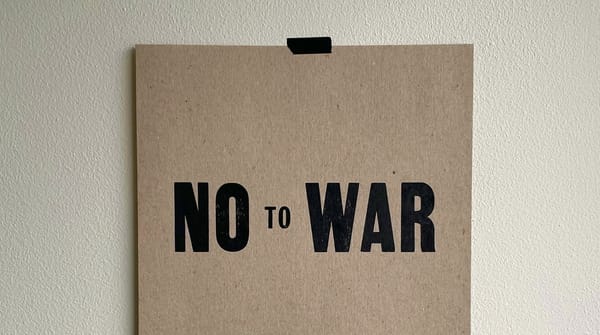AI is Already Disempowering Workers Through Hype
Workers and students are being prepped for less power in the workplace

CEOs want you to know your job isn’t safe.
Ford’s Jim Farley claims AI will eliminate half of all white-collar jobs. Anthropic’s Dario Amodei predicts AI will force the unemployment rate up to 20%. Andy Jassy tells Amazon employees they might well be replaced by AI “agents.”
Even before this summer's round of dire commentary, 52% of US workers told Pew they were anxious about workplace AI’s “future impact,” with just 6% believing it “will lead to more job opportunities for them in the long run.” Lower and middle-income workers, more vulnerable to corporate power, were more likely than higher earners to feel anxiety.
An American Psychological Association poll found 41% worry AI will make at least part of their job “obsolete.” Most concerned were young people and those with certain disabilities.
If CEOs are hyping AI to create fear and stress among workers, they’re doing great. Journalist Allison Morrow nailed it, calling it “a modern spin on a strategy as old as time: Keep workers working by making them afraid of losing their jobs.”
Media coverage generally is contributing to the panic. Doom-and-gloom headlines and catastrophic language abound:
- “For Some Recent Graduates, The AI Apocalypse May Already Be Here” - NYTimes
- “92 Million Jobs Gone: Who Will AI Erase First?” - Forbes
- “Behind the Curtain: A white-collar bloodbath” - Axios
- “41% of companies worldwide plan to reduce workforces by 2030 due to AI” - CNN
- “...CEO warns AI may cause a recession…” - Business Insider
Anxiety from AI Hype is Preparing Workers to Accept Less
Workers afraid of losing their jobs aren’t necessarily able to work harder or smarter. Fear is counterproductive if the goal is improved performance. A sense of safety and being valued allows people to feel inspired, to develop and achieve. Unsurprisingly, there is a “negative correlation between overall [workplace] stress and productivity.”
Panic about impending job loss can, however, prepare people to accept less from employers. Almost two-thirds of those surveyed by MarketWatch said that under mass layoffs they would be willing to take a pay cut to stay employed. Large numbers said they would accept a relocation (42%) or a demotion (37%). About half of those who work from home would be willing to return to the office if it meant keeping their job.
AI hype could enable companies to cut headcount and increase productivity — or the illusion of it — by overworking staff: 53% would “accept additional responsibilities without additional pay.”
Fearful or insecure workers are also less likely to report power abuse and harassment, allowing these to flourish and persist in companies.
“Workers will need to be more flexible” sure sounds like code for Suck it up, Buttercup.
Students and Workers Are Urged to Compete to Survive
Forecasts of the number of jobs AI might destroy vary widely, as do predictions about which industries and workers are most at risk. Some, though, predict a hollowing out of the middle class. Reskill and rise or resist and drop is the message of articles such as “AI could force 12 million workers to switch jobs in coming years, causing unprecedented competition.”
Workers are being instructed to “upskill” themselves. Employers that insist on AI’s essentiality could, of course, provide training; in fact, many plan to — suggesting that the mass layoffs threat may be overblown.) So could a government help accomplish this “upskilling.” Yet the Trump Administration, though claiming AI is crucial to the nation’s defense and economy, has pledged only a piddling amount to train workers and students.
Instead, workers are being told to get themselves AI savvy—with the intimation that their smarter co-workers are up to just that. Get ready to play a game of musical office chairs and beat your colleagues to a shrinking number of seats. Hurry because McKinsey says, “It could take years for a worker displaced by AI to retrain and make themselves more competitive in a job market more heavily integrated with AI.”
Even before they start careers, high school and college students are twitching about what AI means for their future and being urged to see their classmates as opposition:
More than half of the students surveyed worried about AI’s impact on them achieving their college and career goals…Of the more than 1,300 students polled, 55 percent said they were somewhat or strongly worried that other students’ AI usage will hurt their chances of getting into their chosen college. Similarly, about three out of five said they believe other students’ AI usage will affect their chance of getting scholarships and limit career opportunities after college.
This zero-sum strain of AI hype pushes workers to compete rather than unite. Meanwhile, worker solidarity and strong unions are one of the only counterweights to increasingly powerful corporations using AI to surveil, control, and exploit them.
When Workers Unite, Democracy Thrives
Unions mean better pay and benefits, less inequality, higher government revenues, lower government spending, and improved health and safety for their members and broader communities.
Critically, unions promote democracy. Economic Policy Institute explains that, by contrast, worker disunity:
has significant long-term political and economic effects, such as lower voter turnout, lowered organized labor contributions, less voter mobilization, fewer working-class candidates serving in state legislatures and Congress, and more conservative state policy.
States with weaker union power, EPI shows, are more likely to pass voter suppression laws. These laws are an important part of what author Ozan O. Varol has called the “stealth authoritarianism” that set the stage for minority rule and Trump’s in-your-face assault on democracy.
AI hype should be added to the list of ways our oligarchs are contributing to authoritarianism. Add resisting that hype to the ways that the rest of us can fight.



